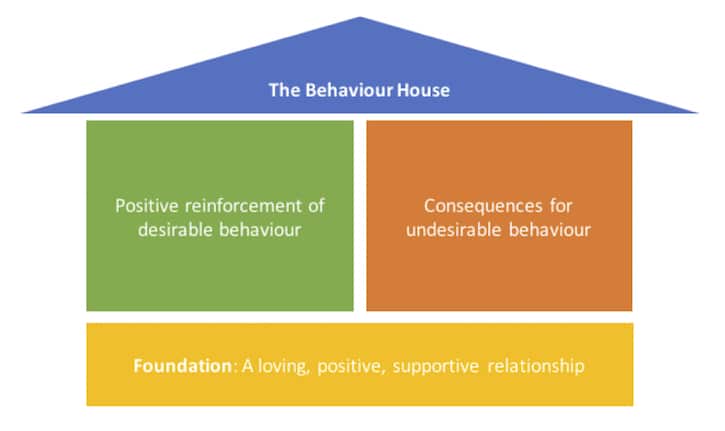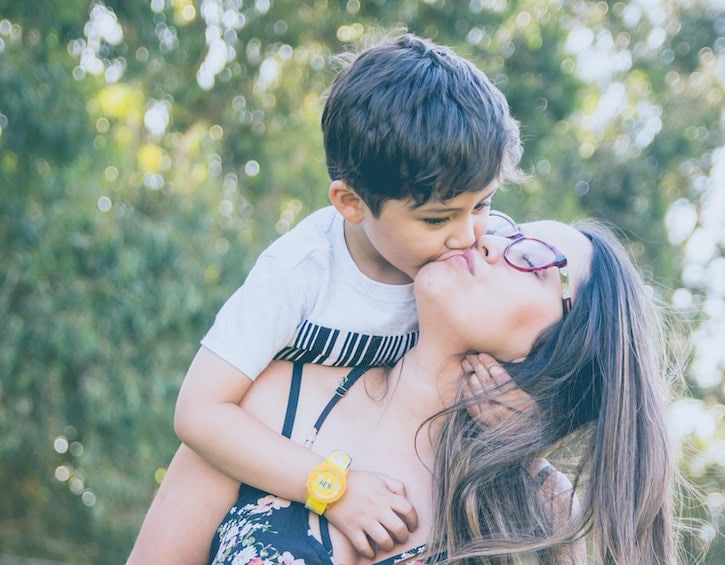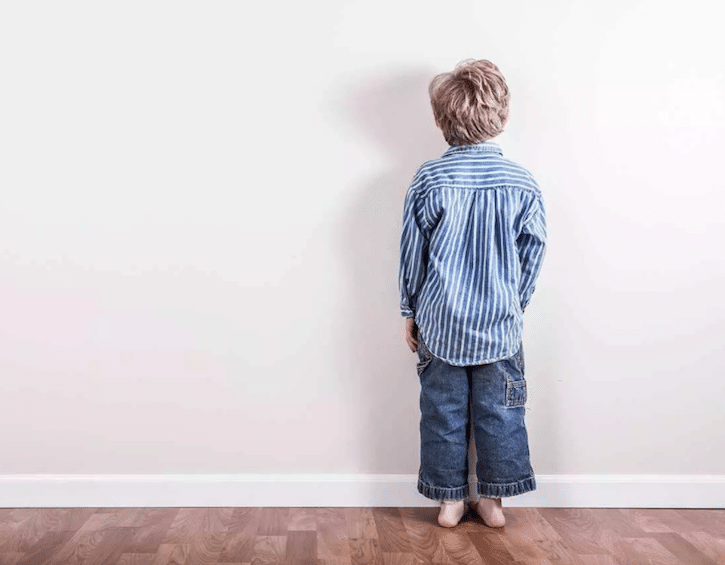
 Post Category - ParentingParenting
Post Category - ParentingParentingWhat does effective discipline mean to you, mama? Does your own childhood experience with physical punishment affect how you discipline your own kids?
It is a topic that parents often struggle with and is surrounded with controversy, which makes discussing it with other parents difficult. Psychologist Pip Johnson discusses the essential ingredients of an effective discipline strategy, and why we should try and refrain from using physical punishment as part of our discipline repertoire.
A good starting point…
Turns out that the Latin origin for the word discipline means ‘instruction and knowledge’. Following these roots, the goal of positive child discipline is to teach and guide appropriate behaviour and self-regulation over the long term, rather than to purely reduce immediate misbehaviour in the short-term. Based on this, there are three essential components to an effective discipline strategy within the “house” of good behaviour:

Ignoring one aspect of this framework will make the other two components much less effective. Here are some ideas on how to encompass all three – foundation, positive reinforcement, and consequences – in your discipline strategy.
1. Foundation: Fostering a loving relationship
A loving relationship is the foundation of your discipline strategy. This is about treating our children with respect, and giving them quality time. This includes sitting and playing with them, engaging in what they are interested in, and interacting with lots of warmth and affection. A loving positive relationship will mean that your responses to your children’s behaviour, both positive and negative, will have a much greater impact because they will care more about your approval. It will also help your child feel loved and secure, which leads to lots of other positive outcomes for them!
2. Reinforcing desired behaviours
Discipline isn’t just about ensuring our children know what not to do…it is just as important to help them work out what they should be doing! We need to help our children learn behaviours that meet our expectations, but which will also help them develop positive social relationships and recognise what is appropriate in different settings.
We can reinforce positive behaviours through giving encouragement and attention to ‘desirable’ behaviours. You might like to also try formal strategies such as reward charts. If you use reward charts, less is often more. A good rule of thumb is that the number of desired behaviours should be less than your child’s age, and even for older children, not be greater than 6-7 behaviours. It is also important that your child is engaged in the process of building the reward chart – and in particular choosing the ‘reward’.
3. Reducing undesirable behaviour
This is perhaps the most difficult aspect of discipline. There are two commonly used approaches; ‘extinction’ and ‘punishment’.
Extinction: Time-outs and removal of privileges have been found to be very effective. Research suggests it increases preschool aged children’s compliance with parental expectations from 25% to 80%; effects are similar levels for older children. For timeouts and removal of privileges to be effective, they must be used consistently. For time-outs, use the child’s age as a guide to how many minutes to be in time-out. For instance, for a 2-year-old, a 2-minute time-out is sufficient. Extinction may take time to yield results. Early on, you need to be prepared for attempted escapes (i.e. continually putting the child back in the time-out location), and emotional outbursts in response to the extinction strategy you’ve used.
Punishment: Verbal and physical punishment are common strategies – sometimes unplanned as a result of frustration! Research suggests that verbal punishment (i.e. yelling, scolding), if used frequently, is not effective. It may act as a source of attention and therefore reinforce undesirable behaviour. Physical punishment is also much less effective in the long run than time-outs or removal of privileges for reducing undesired behaviour.
In addition to physical punishment not being that effective, there are some long-term downsides to worry about. Physical punishment has been shown to lead to increased aggression, mental health problems, antisocial behaviour, lower self-esteem, and negative relationships with parents. It has also been shown to result in mental health problems and antisocial behaviour later in adulthood. Given these factors, I recommended that parents try and adopt other methods such as time-outs and removal of privileges to discourage undesirable behaviours.

Important! Kids can have trouble regulating their emotions. When you sense that they have ‘lost it’ (i.e. not in control of their emotions) they need a more loving and nurturing response from you – not an extinction or punishment strategy. Check out my post on identifying ‘Upstairs’ versus ‘Downstairs’ tantrums and what to do about each here.
Overall, an effective discipline strategy takes time to practice and develop, and will vary for every parent and child combo. Don’t be too hard on yourself, mama…even if you know all the things you should be doing, it is sometimes hard to put in practice in the heat of the moment! Just think of each day as a fresh start and keep trying! That’s all any of us can do.
To give you some more ideas, here are a few tips from experts that I think are really valuable:
- Based on lots of research on married couples, The Gottman Institute developed the ‘Magic Ratio’ which suggests that in order for a relationship to be flourishing, the ratio of positive to negative interactions should be 5:1. Try and keep this in mind when interacting with your kids.
- You could try 1-2-3 Magic developed by Dr. Thomas Phelan. It works in conjunction with time-outs and involves you providing a slow count of 1-2-3 in response to undesirable behaviour, followed by a time-out if the child continues the behaviour. There are lots of great videos of Dr. Phelan demonstrating how to use 1-2-3-Magic on Youtube.
- Problem-solving discipline is a strategy that can be used with older children where you involve them in coming up with a solution for a discipline issue, which is much more likely to lead to change. This is an approach from Supernanny and she outlines it in detail here.
Lead image sourced via Fortissima
Mother and son image by Alvaro Reyes via Unsplash
Boy time out image and girl covering face image via Shutterstock








